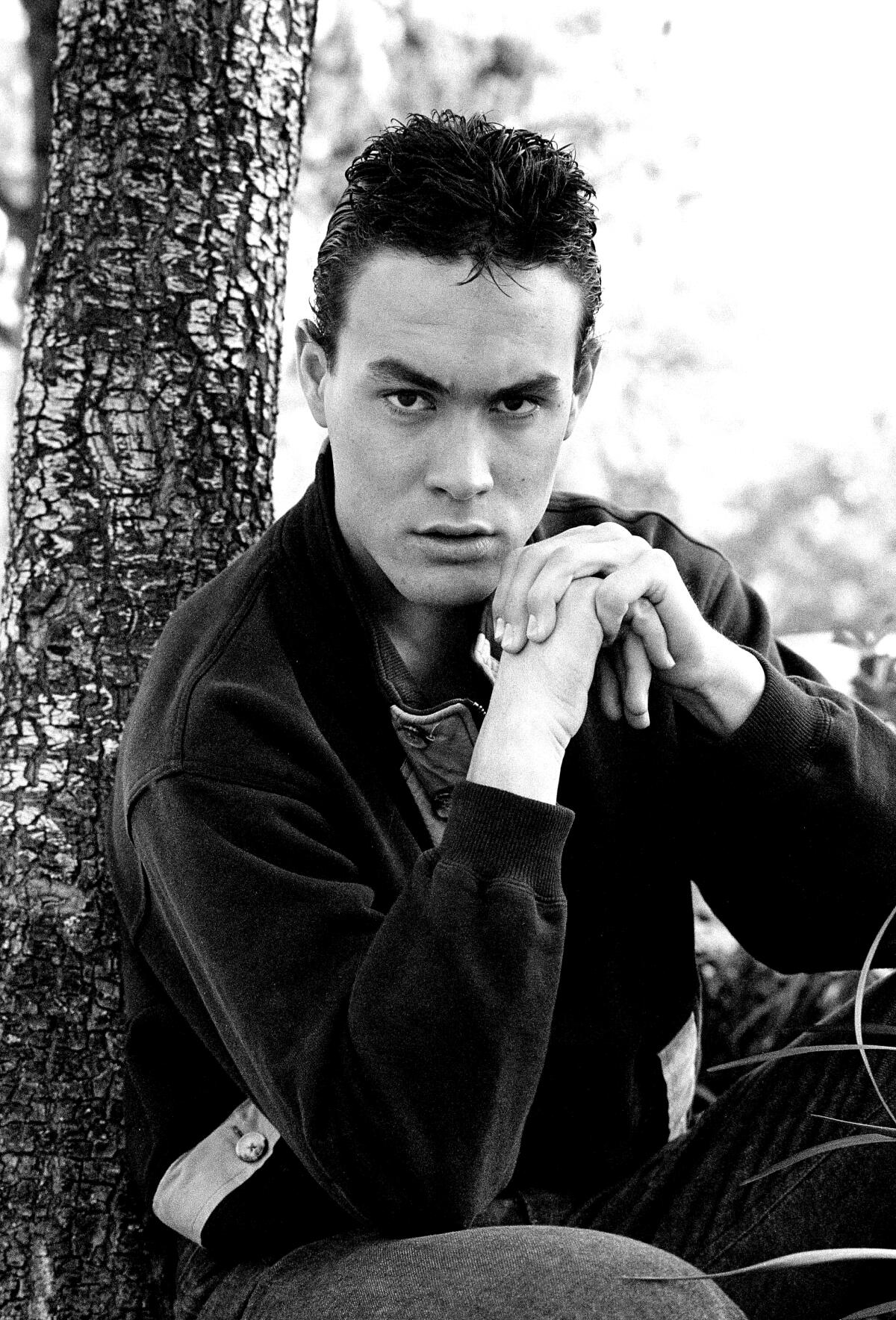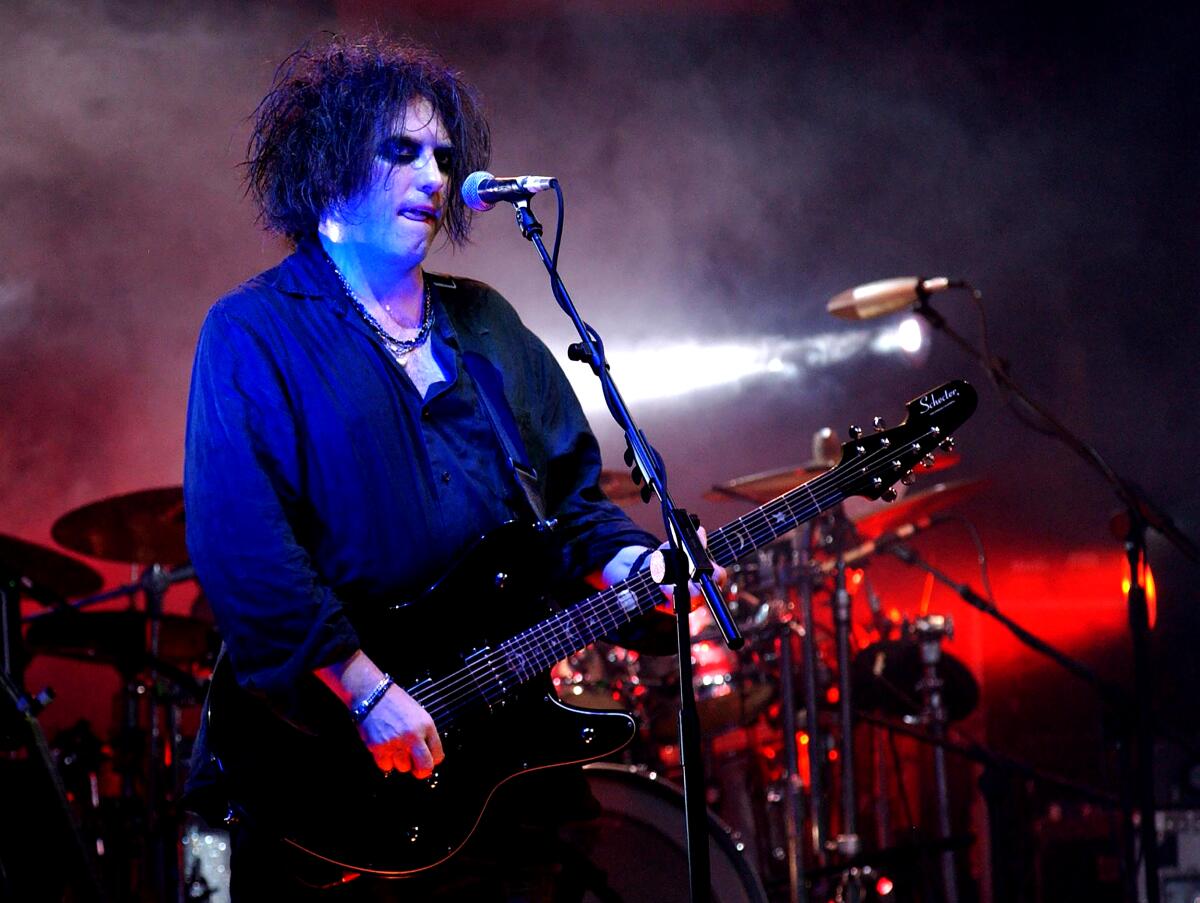“Because we do not know when we will die, we get to think of life as an inexhaustible well, and yet everything only happens a certain number of times,” said Brandon Lee in his final interview less than two weeks before his death in 1993.
Reciting a passage from Paul Bowles’ 1949 novel “The Sheltering Sky,” Lee went on to explain that people often take things for granted and have a perception of time as infinite. This concept of eternal life helped Lee carve the character he was playing in “The Crow.” Murdered along with his fiancée by a gang on Halloween, Eric Draven returns from the dead a year later, guided by a crow, to avenge their deaths in the 1994 film. After his rebirth, Lee believed Draven understood the preciousness of every moment.
“The Crow “ was first imagined in 1981 by artist and writer James O’Barr, while he was stationed in Berlin with the Marines, following the death of his girlfriend by a drunk driver in 1978. His story of two torn lovers developed more after he read a newspaper article about a couple murdered in Detroit over a $20 engagement ring. O’Barr first released “The Crow” as a comic series in 1989 before it was later adapted to film in 1994, directed by Alex Proyas and written by John Shirley and David J. Schow. The 30th anniversary of its release is marked by a remake of the film, coming out Aug. 26. The movie will be directed by Rupert Sanders and star Bill Skarsgård, Danny Huston and FKA Twigs.
Once the original film had the go-ahead by February 1992, producer and music supervisor Jeff Most began piecing together an original soundtrack, recruiting alternative artists that predominantly surfaced from the early ‘80s through the cusp of the ‘90s, and artists partly informed by O’Barr’s earlier musical references. The author originally dedicated “The Crow” to Joy Division’s Ian Curtis and chiseled his protagonist Eric specifically with the face of Iggy Pop and the body of Bauhaus’ Peter Murphy in mind.
“The concept [of the soundtrack] was to do it where no one’s heard a single song in the movie and it’s all original,” says Most.
He also got O’Barr’s blessing to give Eric the last name “Draven” in the film and to make the character a guitarist in an alternative rock band, Hangman’s Joke.
“Everybody I spoke to said, ‘’You’re on crack. There’s no such thing as an alternative album with songs that weren’t top 40 hits,’ ” Most says. “And I said, ‘Well, that’s the album I’m going to make.’ ”
For the soundtrack, Most connected with Nine Inch Nails frontman Trent Reznor, and that band became the first act to agree to appear on the soundtrack with a cover of Joy Division’s 1980 B-side “Dead Souls.”
Reznor also helped Most secure a label for the soundtrack. Once Reznor and the band were on board, Atlantic moved ahead with the album.
“I was like ‘Thank you, rock star gods above,’ ” recalls Most. In turn, the label also started sending other artists to him for his consideration, including Stone Temple Pilots, who were the first band to write a song for the film. At first, STP submitted “Only Dying,” which was later replaced with the “Purple” track “Big Empty,” due to the nature of the lyrics following Lee’s death. By the time “The Crow” came around, the band had already started exploding in popularity following its 1992 debut studio album, “Core,” which was only elevated by the film.
“Life was moving at such a fast pace at that time for us because we were saying ‘yes’ instead of ‘no’ to lots of opportunities,” says STP bassist Rob DeLeo. “ ‘Purple’ debuted at No. 1, and having ‘Big Empty’ in a big movie also worked [to get] the band out there to the public. The timing was spot on. ‘Big Empty’ had the vibe and mood they were looking for. It’s amazing when the sonic and visual worlds collide and work together.”
DeLeo continues, “The movie has a great vibe to it. It was a great time in our career when situations all came together. Those memories are priceless.”

An early photo of “The Crow” star Brandon Lee. Jan. 30, 1986.
(Lacy Atkins/AP)
Helmet frontman Page Hamilton said that the soundtrack also delivered a strong musical statement at the time. It managed to marry different strands of alternative rock without any musical, egotistical or other discord.
“It had a huge impact, and it was a melding to me,” he says.
On the soundtrack, Helmet contributed “Milquetoast,” a track originally written for the band’s third album “Betty” (1994) and repurposed as “Milktoast” for the film. “Look at [the] Jesus and Mary Chain [who also contributed ‘Snakedriver’ to the soundtrack], who influenced us, and other bands from that era,” adds Hamilton. “Then it turned into different camps. You were either goth, New York hardcore, or post-hardcore, but back then it was just … music. It wasn’t ‘You’re in this or that camp.’ ”
Even though O’Barr featured the entire lyrics to the Cure’s 1982 “Pornography” single “The Hanging Garden” in “The Crow,” when the band was asked whether the song could be used in the film Robert Smith agreed to write an original track instead: “Burn.” From that opening the soundtrack navigated a Rollins Band cover of Suicide’s “Ghost Rider” — an album outtake they used to play during encores— along with Pantera’s rendition of the Poison Idea song “The Badge,” and Rage Against the Machine’s “Darkness.”
“There wasn’t that separation like ‘I only like goth, and I’m gonna wear black clothes,’ ” says Hamilton of the essence of the soundtrack. “ ‘The Crow’ had more than that to me. It was music.”
That legacy of the soundtrack also touched the Violent Femmes, who contributed “Color Me Once” to the film, an experimental recording the band had lying around.
“Once ‘The Crow’ was released, we were thrilled to be associated with such an iconic and significant film,” says Violent Femmes’ bassist and co-founder Brian Ritchie. “It also introduced us to a whole new range of listeners.”
Some artists also played a small role in the film. After Nine Inch Nails pulled out of their appearance in the film due to scheduling, My Life With the Thrill Kill Kult replaced the band in the nightclub performance scene, set underneath the headquarters of gang leader crime operative Top Dollar, during the “Big Moby” shootout. The Thrill Kill Kult made it to the Wilmington, N.C., film set the next day with a reworked “Nervous Xians” — renamed “After the Flesh” — which they recorded at 1 a.m. before they filmed the scene inside a chilly cement factory in the middle of winter.
The Thrill Kill Kult’s Buzz McCoy remembers the band engaging in small talk with Lee in the makeup room during filming. Several weeks later, the actor succumbed to an accidental on-set gunshot wound while shooting a scene on March 31.
“He [Lee] was very humble and sweet,” recalls McCoy. “We were devastated to hear what happened only a few weeks later.”
Along with the Thrill Kill Kult, Los Angeles rockers Medicine also had a cameo in the movie with their static-y and unpolished “Time Baby II”; the band recorded another version, “Time Baby III,” for the soundtrack featuring the Cocteau Twins’ Elizabeth Fraser.

Robert Smith, lead singer of The Cure, wrote the song “Burn” for “The Crow” soundtrack
(Yui Mok/Associated Press)
“ ‘The Crow’ just blew my mind,” says Medicine founder Brad Laner, adding that the film “meant the world” to Lee, who was a rising star following his 1992 action film “Rapid Fire.” Lee was the son of actor and martial artist Bruce Lee, who died at age 32 in 1973.
“I think it [‘The Crow’] would have made him a star,” adds Laner, referring to Brandon. “It was just an extreme misfortune. [His younger sister] Shannon didn’t know her dad. She was 4 when her father died, so Brandon was her protector.” Shannon Lee briefly joined Laner for a reformation of Medicine in 2003 and the album “The Mechanical Forces of Love.”
Following Brandon Lee’s death, his mother, Linda Lee, and fiancée, Eliza Hutton, asked that the film be completed and released and that work on the soundtrack also move forward. Canadian singer-songwriter Jane Siberry co-wrote and recorded the plaintive closing ballad “It Can’t Rain All the Time,” titled after a line Draven says in the film. Siberry called recording the song, co-written with New Zealand industrial musician and composer Graeme Revell, “a special moment.”
“It was really big, our consciousness going into one film,” Siberry adds. “It was quite remarkable, really, the ability to make a film where the real people are almost larger than life.”
On the film side, Most grew close to Lee before they were on location filming. “Brandon was intimately involved with the development, the script,” Most says. “He had this brilliant insight about making his character the only character that’s not grounded.”
Now, three decades later, Most believes there’s still a deep connection to the original film and the music behind it.

“The first film, for me, is something I’m just incredibly proud of, and I think it holds up,” he says. “We set out to push the envelope, and what resonates with me is that for a moment in time, on a comic book movie, we did something that broke down the bounds of whatever had been done in this genre.”
Remaining scenes in the film were completed with stunt double Chad Stahelski, digital effects, and a reworking of the script.
”Losing somebody that was a great friend, and all that that involved — it was a very difficult shoot [finishing the film without Lee],” says Most. “I’m most proud that we took the movie from a very dark place in post-production.”
After “The Crow,” Most went on to produce “The Crow: City of Angels” (1996), a third installment of “The Crow: Salvation (2000),” and “The Crow: Wicked Prayer (2005),” and the soundtracks for each, but wasn’t involved in the 2024 remake, nor its soundtrack, scored by German composer Volker Bertelmann (“Lion,” “All Quiet on the Western Front”).
The music for the new “Crow” film includes Ozzy Osbourne and Post Malone’s 2019 single “Take What You Want,” which was featured in the trailer. As for the new film, Most says it appears to be devoted to the relationship between the ill-fated characters O’Barr imagined decades earlier, which, he says, was always the core of the film and what carried it through the past 30 years.
“This movie is about love,” Most says. “I think that is what resonates with people to this day. That’s the emotional center of the film, the emotional chord that strikes people when they walk away and remember it.”


